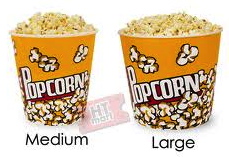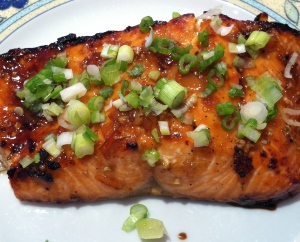I’ve written numerous blogs about how the plates and cups we use really make a huge difference in how much we eat. If you fill up a small bowl with ½ cup of frozen yogurt, you will feel satisfied when you’re done. And yet that same ½-cup portion, in a much larger bowl, just doesn’t do the trick!
Companies in the food industry know this and they do their best to fool us.
Take a look at this:  While these 2 lines are the same length, most of us think that the vertical line is longer. Our brains somehow understand that taller is more.
While these 2 lines are the same length, most of us think that the vertical line is longer. Our brains somehow understand that taller is more.
Let’s apply this to food and use an example: movie popcorn. In most movie theaters, if you place a medium bucket of popcorn next to a large bucket you will notice that they’re roughly the same height. The large bucket might hold 50% more popcorn, but this increase is done by expanding the width of the bucket. This way, our brain can’t obviously see the extra volume.
If the large bucket were re-designed having the same width but 50% taller, we would immediately understand how much more the larger bucket would hold. And then maybe, we would think, “Gee, I’ll stick to the medium—that’s going to be too much.”
Here are some visual examples: This first picture shows 2 buckets of popcorn–1 medium, 1 large. Since they’re the same height, we can’t really see the extra volume in the large.  Now look at this picture—these 2 containers are vertically different and we can immediately see the size difference.
Now look at this picture—these 2 containers are vertically different and we can immediately see the size difference. 
So pay attention to this optical illusion when eating. Once you start focusing, you’ll notice that these “tricks” are everywhere!



